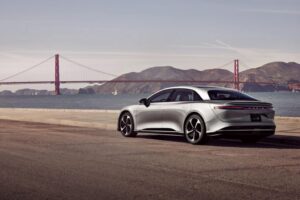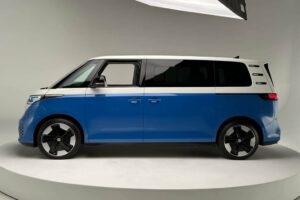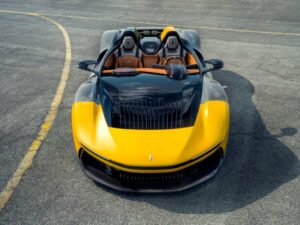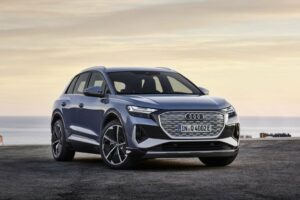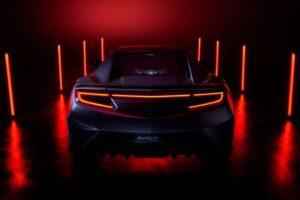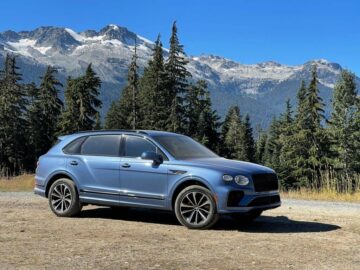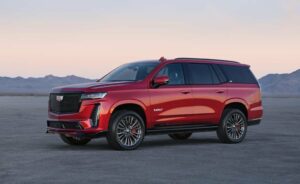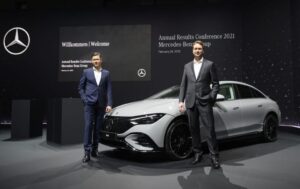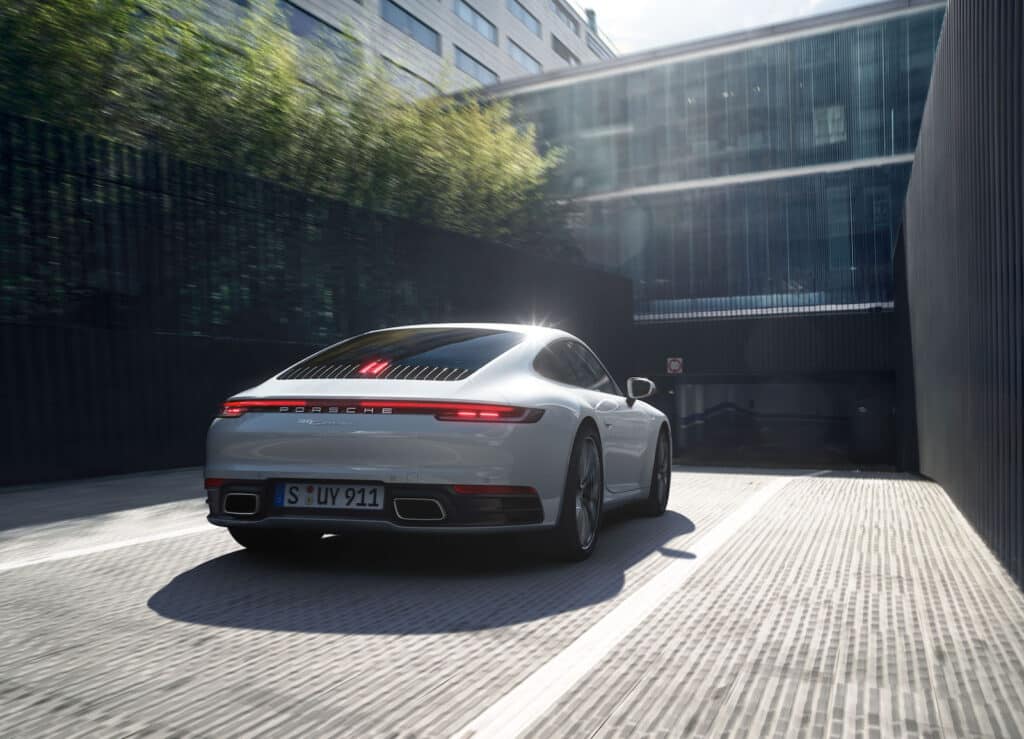
As the internal combustion automotive era enters its denouement, one gasoline-burning Porsche model will be the lone survivor: the iconic Porsche 911.
With Porsche planning to have 80% of its line-up electrified by 2030, the 911 will be the automaker’s only internal-combustion engine model left standing, an unnamed top executive told Reuters.
The move makes sense given the automaker’s extensive investment in e-fuels and its lobbying for the European Union to permit e-fuel vehicle sales after 2035, when the EU plans to phase out sales of new internal combustion engine vehicles.
The move would be different from other high-end sports car manufacturers, including Jaguar and Lotus, which are planning for a pure electric future, fielding nothing but battery-electric vehicles. Even Ferrari is shifting gears, with plans for 80% of its sales to be electric vehicles by 2030, much like Porsche.
But even Porsche is preparing for nearly all of its offerings to run on electrons. Plans call for the Macan compact SUV to be electrified first among its gasoline-powered vehicles, followed by the 718 sports car, the Cayenne SUV, and then the Panamera by 2026. The automaker already produces the battery electric Taycan, and a new version is slated for 2027. In addition, the automaker currently offers hybrid gas-electric versions of the Panamera and Cayenne.
Investing in an alt-fuel future
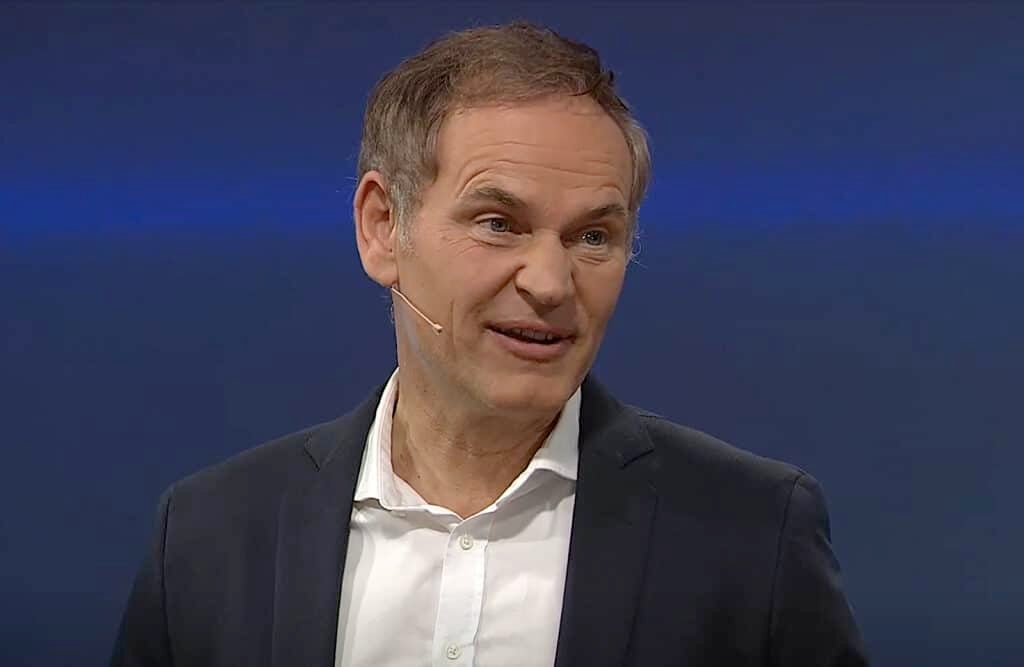
But just as Toyota Motor Corp. has long resisted switching solely to electric vehicles by fielding a wide array of hybrids, Porsche has sought an exemption for e-fuel vehicles.
In March, the European Commission agreed to propose a legal path to exempt cars that run on e-fuels from the EU’s 2035 phaseout. This agreement most likely led Porsche to hedge its bets that such a path will come to fruition. But the timetable also allows the marque to come up with a battery-electric 911 should such a proposal not be approved.
In the meantime, Porsche is already producing e-fuels at a joint venture with Siemens in a plant in Chile. It’s in the plant’s pilot phase, producing 34,342 gallons of e-fuel, with plans to produce as much as 145.3 million gallons by 2026.
“Their advantages lie in their ease of application: e-fuels can be used in combustion engines and plug-in hybrids, and can make use of the existing network of filling stations,” said Porsche CEO Oliver Blume, in March. “We have broad technical expertise. We know exactly what fuel characteristics our engines need in order to operate with minimal impact on the climate.”
Porsche executives filled a Porsche 911 with the first synthetic fuel produced from the facility in December.
A synthetic fuel lifeline

E-fuels, usually referred to as synthetic fuels, share the same basic chemical make-up as regular fuels used in internal combustion engines. However, e-fuels employ renewable energy to power a complex process that involves the creation of synthetic methanol from water, hydrogen, and carbon dioxide. Businesses assert that they can run gas-powered motors while being nearly carbon neutral. The need for oil for engine lubrication would still exist.
But there’s a catch.
To separate hydrogen from water and combine it with carbon to make synthetic fuel requires a lot of electricity. The amount of energy in electricity transformed into fuels is at most 50% translating into an E-fuel cost of about $18.93 per gallon per gallon. That’s predicted to decrease to $11.36 per gallon by 2030.
Porsche, however, is investing $75 million in HIF Global LLC, a firm that is working to generate electric fuels, with ambitions to build 12 e-fuel production facilities in Texas, Chile, and Australia that will have a daily capacity of 150,000 barrels of gasoline. But that’s a drop in bucket; the United States consumes 8.8 million barrels of gasoline daily.
Still, successful production and sale of e-fuels could prove a lifeline for traditional Porsche sports cars such as the 911.
The 911’s long history

The Porsche 911 was introduced in 1963 as the successor to the legendary Porsche 356. Unveiled at the Frankfurt IAA Motor Show in 1963 as the 901, it was renamed the 911 when it went on sale in 1964. Its air-cooled 2.0-liter flat 6-cylinder engine delivered 130 horsepower. By 1972, the 911 Carrera RS 2.7 was pumping out 210 hp in a sports car weighing less than 2,205 pounds. It was the world’s first production vehicle to sport a rear ducktail spoiler.
It was followed by the new G Series in 1973, living on until 1988, the longest of any 911 models. That’s when the 964 series arrived, the first 911 with all-wheel drive, power steering, and anti-lock brakes. It was a radically changed car, as 85% of its components were new. By now, its air-cooled 3.6-liter flat engine generated 250 hp.
It was replaced in 1993 by the 993, the first 911 with a bi-turbo engine and a newly-designed aluminum chassis. Notably, it would be the last 911 with an air-cooled engine and have the lowest production during its lifetime, as a mere 67,535 units were built. The 993 remains the one true love of many Porsche enthusiasts.

In 1997, despite grumbles from the faithful, Porsche introduced the 996 series, the first 911 with a liquid-cooled engine. To make matters worse, at least as far traditionalists were concerned, it was the first Porsche 911 without elliptical headlights. But the new car’s integrated headlight/turn signal design would be widely copied. It also was the first 911 to share parts with the cheaper Porsche Boxster. But this generation also gave birth to the GT3, so it’s not all bad.
Seven years later, in July 2004, Porsche unveiled the 997. Its 3.6-liter engine produced 325 hp, while the new 3.8-liter engine of the Carrera S managed 355 hp and was fitted with a standard active suspension. More notably, in 2008, Porsche introduced the PDK twin-clutch gearbox, which it first developed for Formula 1 racing. By now, Porsche offered the 911 in a bewildering 24 variants, including Carrera, Targa, Cabriolet, rear or all-wheel drive, Turbo, GTS, special models, and road versions of GT racing cars.
When the 991 appeared in 2011, the 911 was significantly different from what had come before, with an all-new chassis, modified wheelbase, greater track width and built with a mix of steel and aluminum. But it also marked the arrival of electric power steering.
It was replaced by the current version of the 911, the 992, which debuted in 2018.
- SEO Powered Content & PR Distribution. Get Amplified Today.
- PlatoData.Network Vertical Generative Ai. Empower Yourself. Access Here.
- PlatoAiStream. Web3 Intelligence. Knowledge Amplified. Access Here.
- PlatoESG. Automotive / EVs, Carbon, CleanTech, Energy, Environment, Solar, Waste Management. Access Here.
- BlockOffsets. Modernizing Environmental Offset Ownership. Access Here.
- Source: https://www.thedetroitbureau.com/2023/07/porsche-looks-to-keep-911-ice-powered-with-e-fuels/
- :has
- :is
- :not
- $UP
- 000
- 1
- 12
- 2008
- 2011
- 2018
- 2023
- 2026
- 2030
- 24
- 250
- 36
- 67
- 7
- 8
- a
- About
- active
- addition
- advantages
- After
- Agreement
- All
- allows
- already
- also
- ambitions
- among
- amount
- an
- and
- any
- appeared
- Application
- approved
- ARE
- Array
- arrival
- AS
- At
- Australia
- automotive
- Bad
- barrels
- basic
- battery
- BE
- before
- being
- Bets
- broad
- build
- built
- Bureau
- businesses
- but
- by
- call
- CAN
- Capacity
- car
- carbon
- carbon dioxide
- cars
- Catch
- ceo
- changed
- characteristics
- chassis
- cheaper
- chemical
- Chile
- Climate
- combine
- come
- commission
- complex
- components
- concerned
- Corp
- Cost
- could
- creation
- Current
- Currently
- daily
- debuted
- December
- decrease
- delivered
- Design
- Despite
- developed
- different
- drive
- Drop
- during
- ease
- Electric
- electric vehicles
- electricity
- electrons
- energy
- Engine
- Engines
- Enters
- enthusiasts
- Era
- EU
- European
- european commission
- european union
- Even
- exactly
- executive
- executives
- exempt
- exist
- existing
- expertise
- extensive
- facilities
- Facility
- faithful
- far
- filled
- filling
- Firm
- First
- flat
- followed
- For
- formula
- Formula 1
- from
- fruition
- Fuel
- fuels
- future
- gasoline
- generate
- generated
- generation
- given
- Global
- greater
- had
- Have
- hedge
- High-End
- However
- HP
- HTTPS
- Hybrid
- hydrogen
- iconic
- Impact
- in
- Including
- integrated
- internal
- into
- introduced
- investing
- investment
- IT
- ITS
- joint
- joint venture
- jpg
- July
- just
- Keep
- Know
- Last
- later
- least
- Led
- left
- Legal
- legendary
- less
- lie
- lifetime
- like
- likely
- living
- LLC
- lobbying
- Long
- LOOKS
- Lot
- love
- lowest
- make
- MAKES
- managed
- Manufacturers
- many
- March
- marked
- Matters
- max-width
- meantime
- mere
- Methanol
- million
- minimal
- mix
- model
- models
- modified
- more
- most
- Motor
- Motors
- move
- much
- nearly
- Need
- network
- Neutral
- New
- notably
- nothing
- now
- of
- offered
- Offerings
- Offers
- Oil
- on
- ONE
- only
- operate
- or
- order
- Other
- our
- out
- parts
- path
- per
- phase
- pilot
- planning
- plans
- plato
- Plato Data Intelligence
- PlatoData
- Porsche
- pounds
- power
- predicted
- preparing
- process
- produce
- Produced
- produces
- producing
- Production
- proposal
- Prove
- pumping
- racing
- radically
- referred
- regular
- remains
- Renewable
- renewable energy
- replaced
- requires
- Reuters
- road
- Run
- s
- Said
- sale
- sales
- same
- sense
- separate
- Series
- Share
- SHIFTING
- should
- show
- Siemens
- Signal
- significantly
- So
- solely
- sought
- special
- Sport
- Sports
- standard
- States
- Stations
- steel
- steering
- Still
- successful
- such
- suspension
- synthetic
- Technical
- texas
- than
- that
- The
- their
- then
- they
- this
- timetable
- to
- top
- track
- traditional
- transformed
- true
- union
- United
- United States
- units
- UNNAMED
- until
- unveiled
- use
- used
- usually
- vehicle
- Vehicles
- venture
- version
- was
- Water
- we
- weighing
- went
- were
- What
- when
- which
- while
- wide
- widely
- will
- with
- without
- working
- world’s
- worse
- would
- years
- zephyrnet

